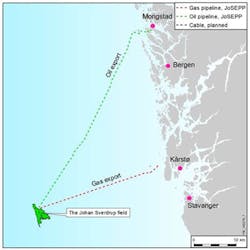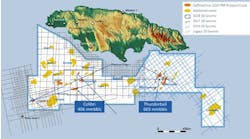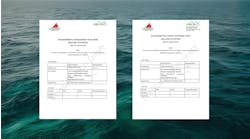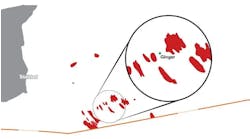Online exclusive: Subsea Valley Conference opens with Norway’s Minister of Petroleum & Energy remarks
Robin Dupre
OSLO, Norway –Norway’s Minister of Petroleum & Energy, Tord Lien, opened the Subsea Valley Conference, held in Oslo, Norway, with remarks on the state of the country’s reserves and current plans in the industry’s current down cycle. Earlier this month, the Norwegian Petroleum Directorate celebrated its 50th anniversary of the country’s first licensing round with an objective to ensure thorough exploration and secure sound financial return for the country.
“More than 50 years ago, our journey in the oil and gas industry began, and here we are today, only producing around 40% of our expected resources, so we have a lot of work ahead of us,” he stated to the audience. “We have not seen the full consequence of the downturn, but this industry has seen tough times before and we will see this one through.”
Norway is poised to further contribute to the country’s energy demands with an optimistic attitude, considering that one of the biggest oil finds discovered on the Norwegian continental shelf holds resources in the amount of 1.7-3 Bboe. The first phase of field development work is expected to provide some 51,000 man-years of work in Norway; and 2,700 man-years in the production phase.
The plan for development and operation (PDO) is expected to be processed by the Storting (parliament) during the 1H 2015 with production slated to commence in 2019.
“By far the largest industrial project in Scandinavia,Johan Sverdrup will represent an enormous value creation,” Linde commented. “But together, we, the industry, needs to cut cost overruns and long project delays, especially in tough times like we are witnessing today, to help us in our next stage of the industry’s life.”
Johan Sverdrup is anticipated to reach a production maximum level at between 550,000 and 650,000 b/d. Statoil, serving as operator, hopes to recover 70% of the field’s resources through innovative technology, for instance,electrification. Johan Sverdrup will receive its power from onshore, reducing total climate gas emissions by more than 80%, when compared with a standard development procedure involving gas turbines on the NCS, Linde commented.
Total first-phase investments will amount to about NOK 117 billion ($15 billion), which includes a field center and four platforms, wells, export solutions for oil and gas, plus power supply. The NPD has taken a very active interest in the field from the first discovery well, stated the Minister, by closely monitoring the delineation of the field and all phases of the project’s development leading up to the PDO.
“It is important to the NPD that the licensees choose a development solution that yields maximum value creation for society,” Linde said. “The most important factor for us in the work of Johan Sverdrup has revolved around understanding the subsurface, and viewing production and increased recovery in a long-term perspective.”
NPD has requested thatStatoil and its Johan Sverdrup’s partners improve the field’s recovery within the first phase of development, Linde stated. NPD believes that injection of polymers is a method that could be used in the field to boost recovery.



